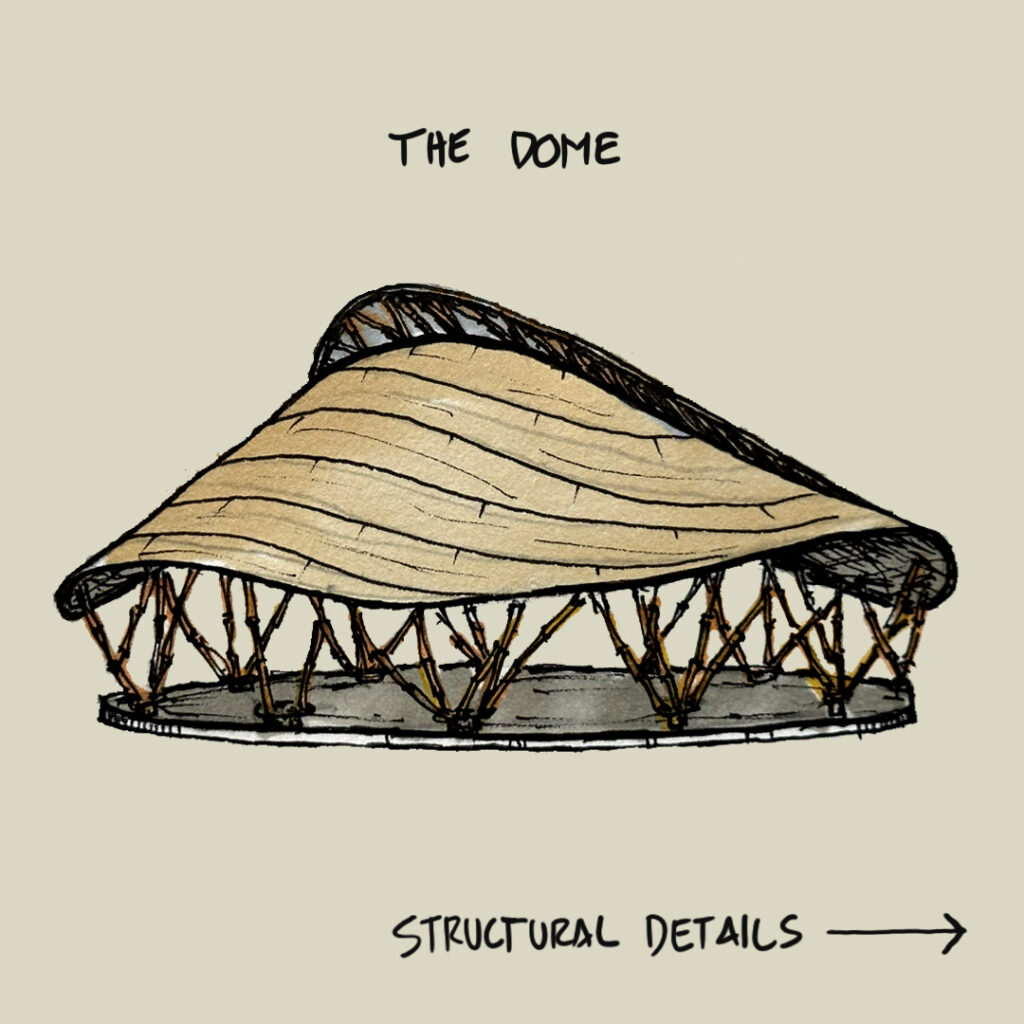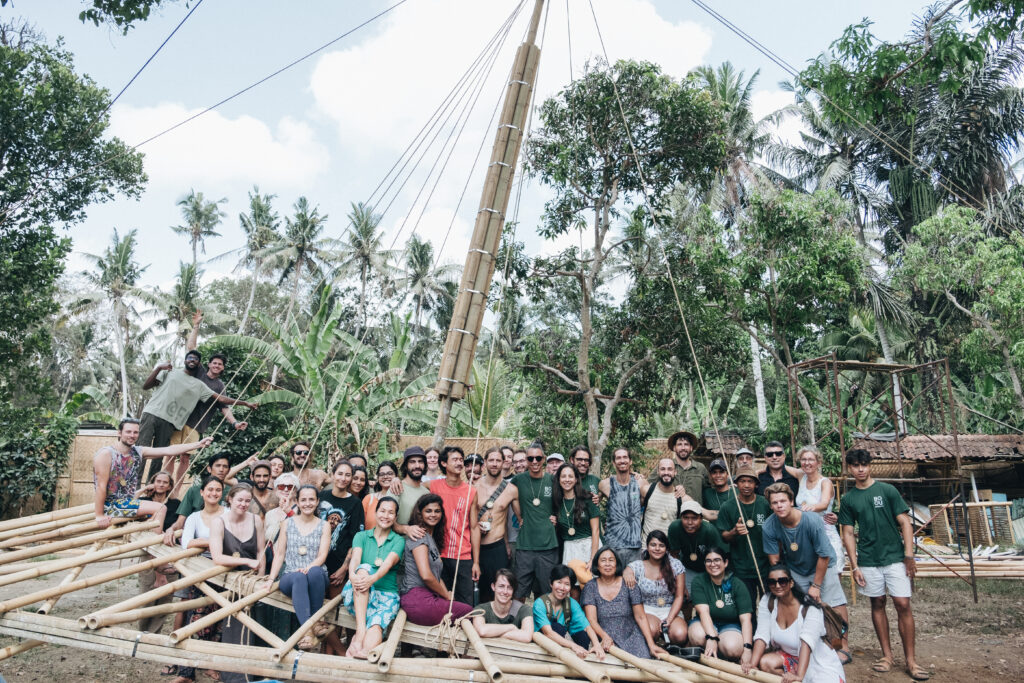The Kubu Connection
By Bella van der Griend | April 28, 2020 | Bamboo U Built Projects -
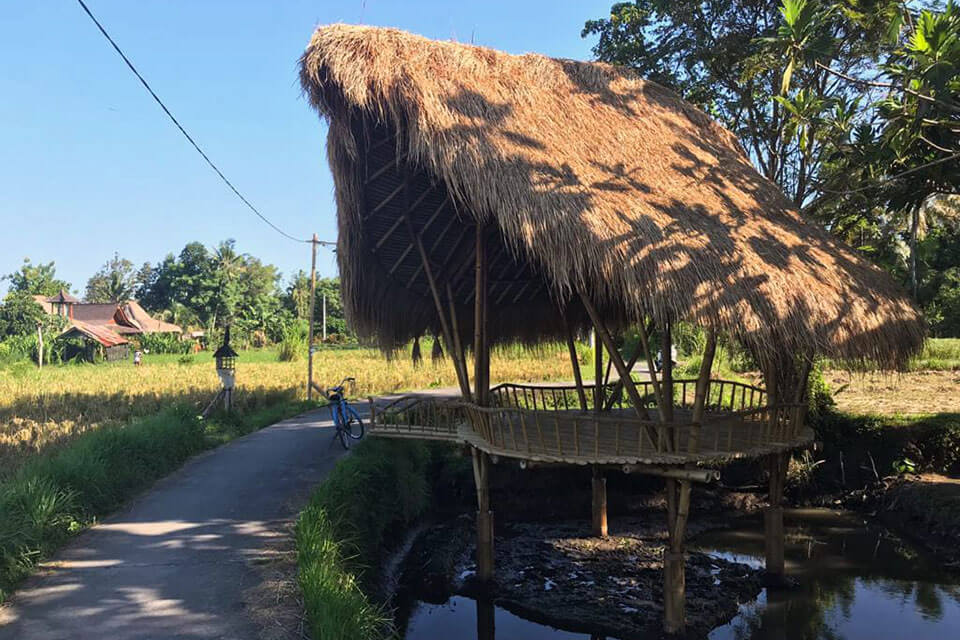
Bamboo U has been exploring various bamboo construction typologies and methods for the past few years, using our own campus as a living bamboo laboratory. Recently we have been researching ways to take the discoveries we have made beyond our campus and into our local community. It is so exciting to see bamboo growing in popularity as a building material for homes, villas, and restaurants within the tourism industry.
At the same time we have noticed that bamboo has not taken the same foothold in the architecture and construction of local communities. We set out to convey that bamboo is just as viable as conventional materials like concrete and steel and therefore should be just as prevalent. An opportunity arose to prove the incredible benefits of bamboo in our community by partnering with Green School’s local community engagement program, Kul Kul Connection. Together, we created a unique bamboo Kubu for local rice farmers.
Kubus are typically very basic shelters, built by farmers with scrap materials. Often they feature a corrugated iron roof, some pieces of bamboo, and whatever else is easily available since farmers can rarely afford any other building materials. Although rice farming is one of the most vital functions of Indonesian society, farmers are mostly relegated to a lower socioeconomic status. This year we launched the Kubu project in collaboration with Kul Kul Connection to construct a series of these small shelters for the farmers who are the quiet heroes of the food system. The farmers will use the structures to store their tools and to rest as they embark on a transition to chemical-free and regenerative farming methods. During this transition, the Kubus will also play a role in a small-scale eco tourism network which will contribute to the farmers’ financial stability and security.
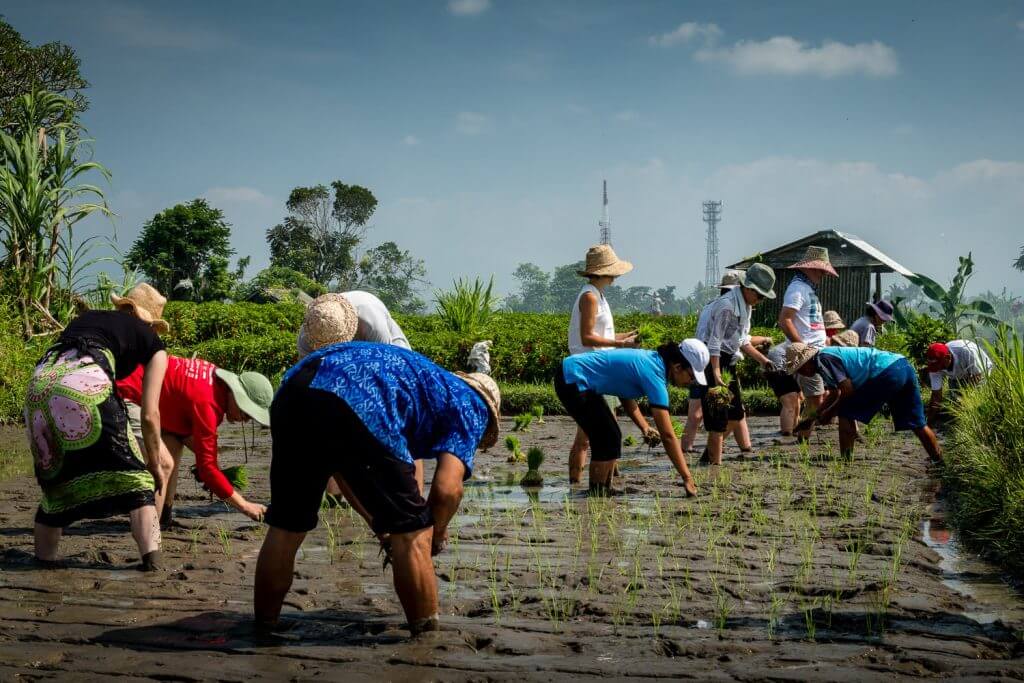
The Kubu will provide an opportunity for locals to educate visitors on the traditions of rice farming and to share the daily challenges of the farmers.Small groups of learners, referred by the international community of Green School will have the opportunity to appreciate the beauty of the rice paddies and fully understand the ingenuity of the farmers which makes it possible. The Kubus may also serve as a space for farmers to teach workshops in various Balinese traditions such as making kites, ceremonial offerings, traditional snacks as well as a space to pray and meditate with local priests.
To give the Kubu more flexibility in how it can be used, we reinvented its typology. Our initial design ideas were based around the idea of a Balinese Kubu, however to meet the needs of the design brief from the Kul Kul Connection we chose to make something more creative and substantial. A basic Kubu is about four square meters, just enough room for a bench and some tools. To provide space for visitors and workshops, we increased the size and gave the floor an oval shape to give flexibility for various interactions. The simple post and beam structure is composed of modular frames so others can easily replicate the design. The roof was lifted higher than usual to give a sense of stature and orient views towards Bali’s highest volcano, Mount Agung. After looking at typical Kubus, we felt that we needed to build an attractive monument which elevated the average farmers shack, whilst creating something which blends into the landscape and does not feel out of place. The use of bamboo as well as the simple but organic form helped us achieve this.
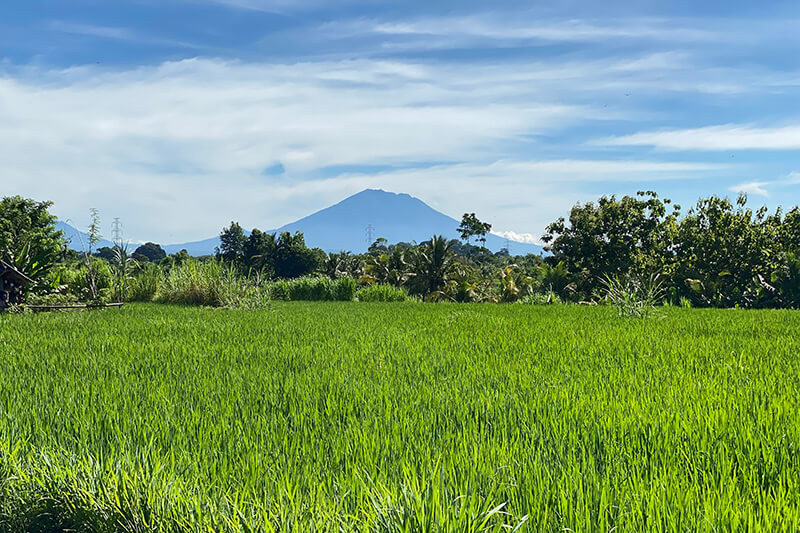
Since the site location is away from the Bamboo U campus, we wanted to construct and assemble as many of the building components as possible on campus before the on-site construction. We built post and beam frames for the main structure by creating templates on the ground using stakes and string to outline accurate dimensions and exact angles. The two post and beam frames employ a combination of Balinese fish mouth joinery techniques and a series of bolted connections. This achieved a structure which could be easily understood and replicated.
In most bamboo structures the curved ridge beam is typically achieved by making small V-cuts into bamboo poles, locally known as the rup-rup technique. This technique requires a level of craftsmanship which must be done on site. For the Kubu we wanted to experiment with splits to create the ridge curve so we could prefabricate the beam on campus and take it to site, ready to assemble. The construction of the roof ridge followed a similar process to the main frames by using a template to outline the profile on the ground. Then bamboo splits were laid along this profile and glued together. By layering six bamboo splits together and pinning them in alternating directions with bamboo pins, we are able to create an integrated truss system which allows the ridge to be very strong.
Once we were ready to take our materials to site, we realized that the main frames were very large. As ten of us were lifting the frame into the truck, trying to determine how best it would fit, the frame snapped at the post and beam joint! Luckily, the bamboo poles were not damaged and it was just the internal bamboo pins which broke. What seemed to be a problem, quickly turned into our solution. We detached the columns from the truss so that we could transport the frame in two pieces, making it much easier to fit into the truck and for us to carry through the rice fields.

Once we arrived at the rice paddies, we began the construction process. First, we set the frames onto the foundations, securing them in place by bolting the floor structure onto the columns. Then we were able to place the roof ridge on top, connecting the center of the frames. We also added the secondary roof supports. After we placed the roof eave, purlins, and finally attached the grass thatching, locally known as alang alang. The Kubu construction required collective onsite decision making and problem solving. Although many members of our team had no experience with construction, let alone bamboo craftsmanship, we were able to make a collaborative effort as a diverse group of builders and volunteers to bring the design to reality.
Throughout the construction process, many farmers who were passing through stopped by and looked at the Kubu structure with amazement; “I did not realize bamboo could make something so unique.” That is when we realized that this dream was the beginning of something great. Creating a beautiful and functional structure can bring a sense of dignity to the people who place each seedling of rice into the soil. And that same structure can make a place of education, discovery and respect for those who will eventually consume that rice.
The local farmers, bamboo carpenters, volunteers from Kul Kul connection, and participants from the Bamboo U March 2020 workshop came together to bring the new Kubus to life during our 11-Day Build & Design Immersion workshop. Bamboo U participants were excited to be involved in the project as a means of giving back to the community.
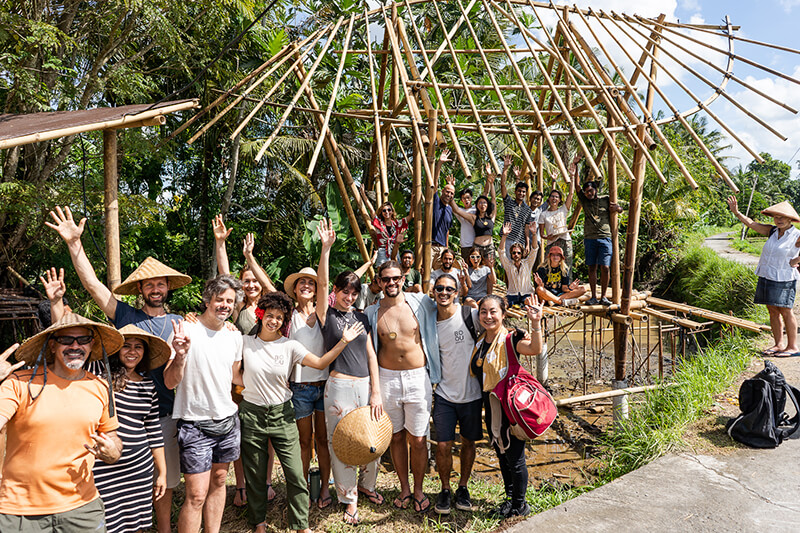
If you want to help the Kubu Project make a donation by contact us or if you would like to learn how to construct a structure like this join us in the next Bamboo U 11-Day Design and Build Immersion Course! For learn more about the Kul Kul Connection initiative visit https://subakumalambing.com/
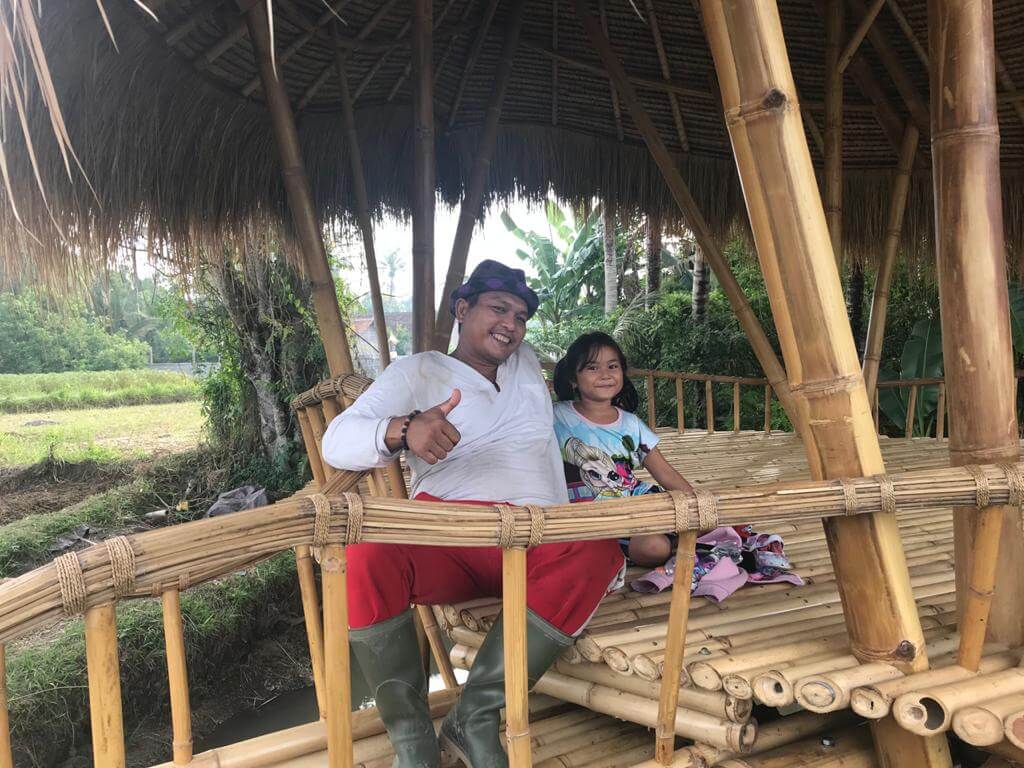
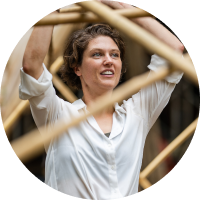
Architect and bamboo enthusiast from the U.S. She came to Bali as a student visitor to research the potential of bamboo building and design and contributed to the building of The Kubu, one of the bamboo projects designed and built at Bamboo U.
OCTOBER 10-21, 2025
The 11 Day Bamboo Build & Design Course in Bali
In 11 days, we'll show you how to build bamboo structures we’ll share all that it takes to build with nature.
Start Anytime
The Bamboo Harvesting Course
The Bamboo Harvesting Course is an online step-by-step training to harvest and care for your bamboo clumps to ensure their longevity and productivity. This maximizes the potential of this beautiful grass as a rapidly renewable resource.Whether you are an architect, builder, or sustainability enthusiast, this mini course will enable you to utilize this rapidly regenerative resource as a durable construction material.It will help remove any fear or doubt about the durability of bamboo and help you build reputable bamboo structures that stand the test of time!













